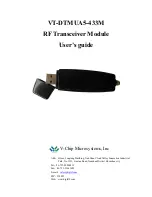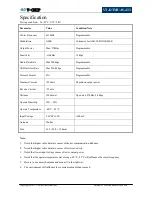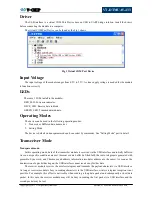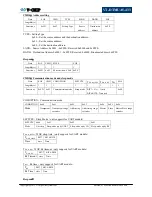
Copyright @ 2013 V-chip Microsystems,Inc
Version: VTDTMUA5-MARCH-2013 v5.0
VT-DTMUA5-433
For example, if the transmitter send “1234567890”, all module in the receive range can receive
“1234567890”. This operating mode supports range extender device that can receive the data and re-transmits data
to other receiver.
Fig 2 Transparent Mode
Addressing mode:
In this operating mode, the transmitter’s source address and destination address need to be the same as the
receiver’s destination address and source address respectively. For example, set the transmitter’s source address
0x0001 and destination address 0x0004, and set the receiver’s source address 0x0004 and destination address
0x0001. The transmitter send “1234567890” then the receiver can receive “1234567890”. This operating mode is
useful in Point-to-Point communication and supports the range extender device that re-transmits data to the
destination module.
Fig 3 Addressing Mode
Master-Slave mode:
In this operating mode, the first 2 bytes of data from the USB is the destination address in the Master side,
the data send to the correct destination address, and the first 2 bytes of data from wireless is the source address, it
tell to the master where the data from. For example, set the master’s source address 0x0001, if we want to send the
data “ABC” to the destination module (source address 0x0002), send data “ABC” to the master, then the
destination can receive the data “ABC”. If the master receives data from a slave “123”, the 0x0004 is the
slave’s address.
The destination address and source address do not input or output via the USB in the Slave side, but the
slave’s destination address must set as the same as the master’s source address.












